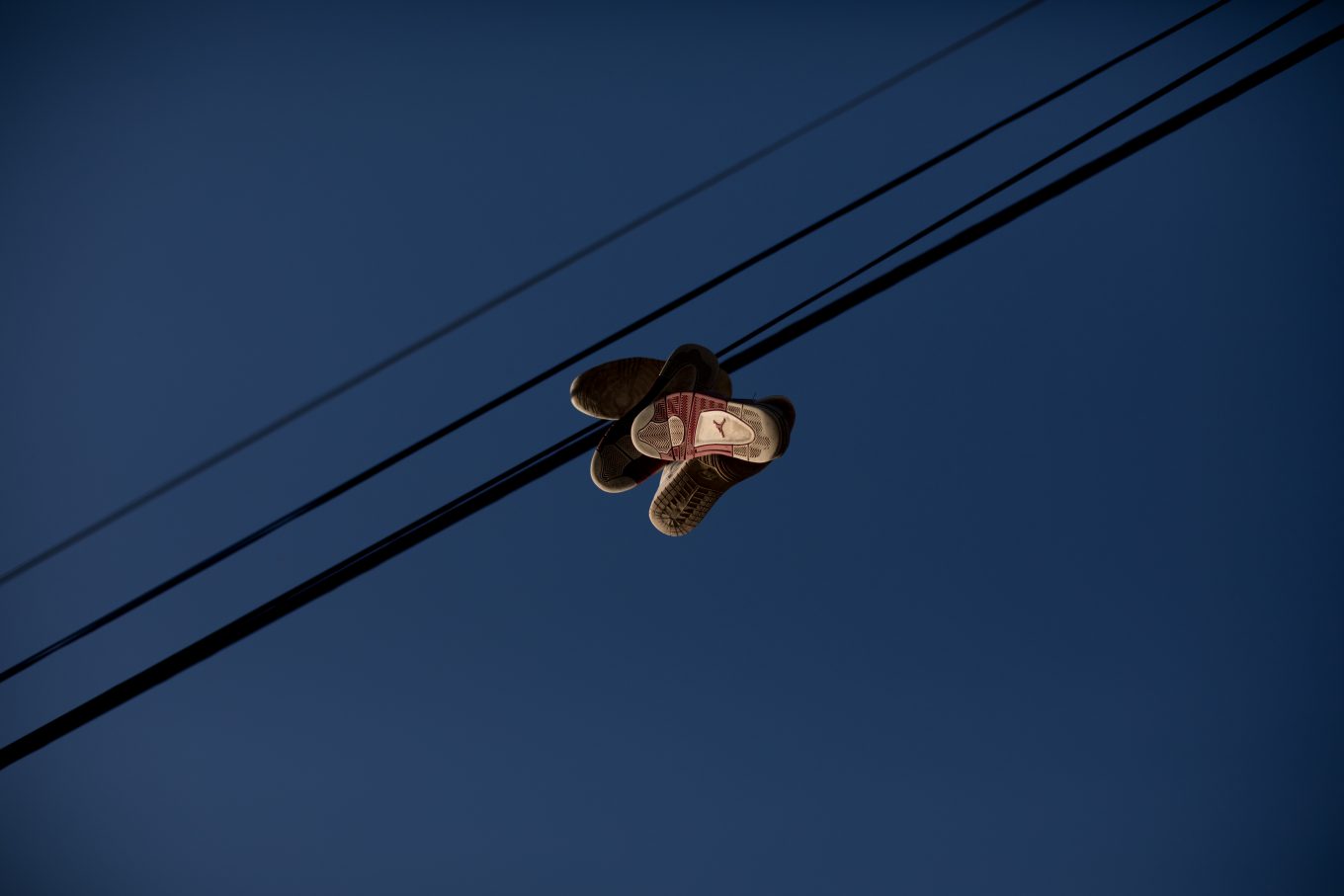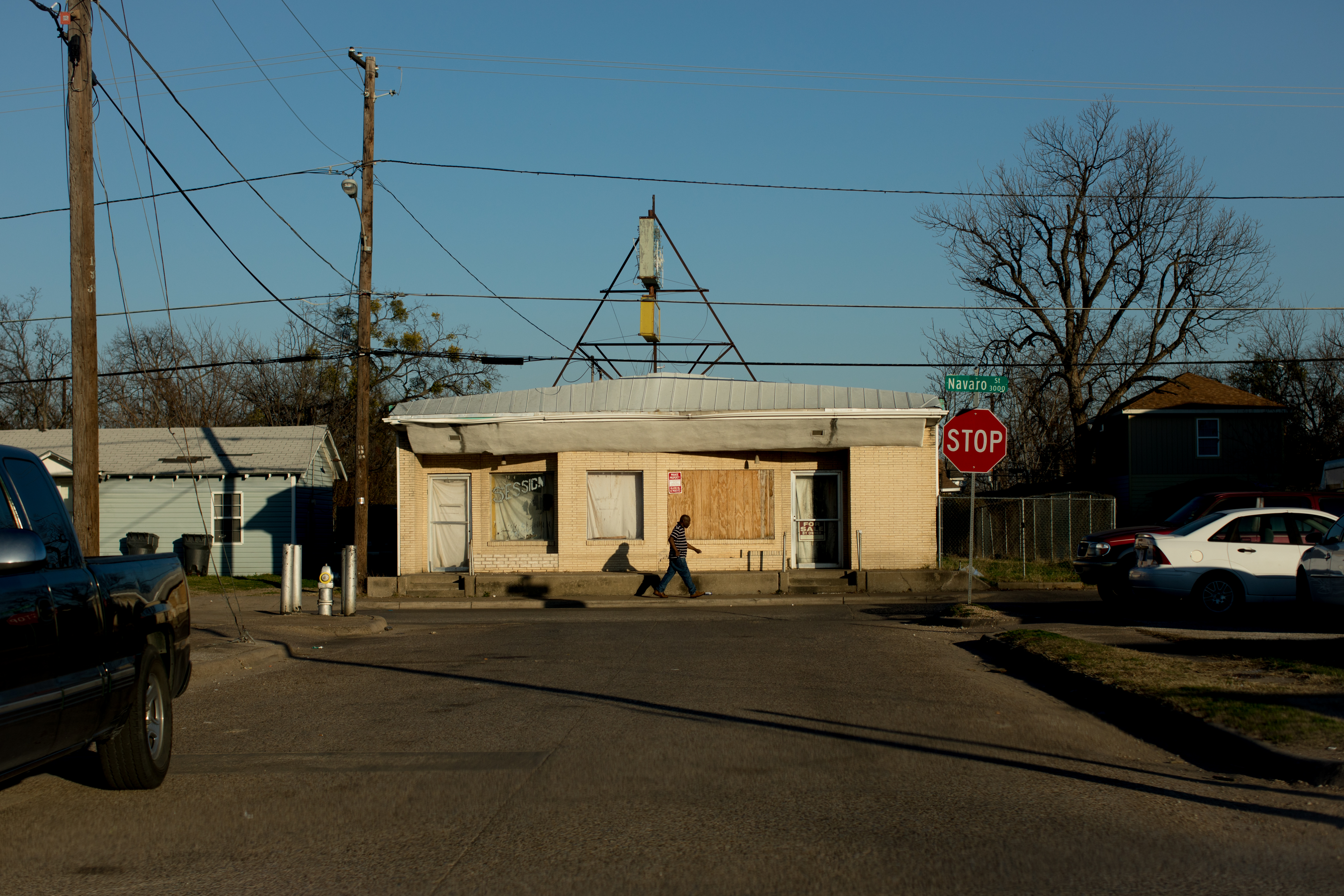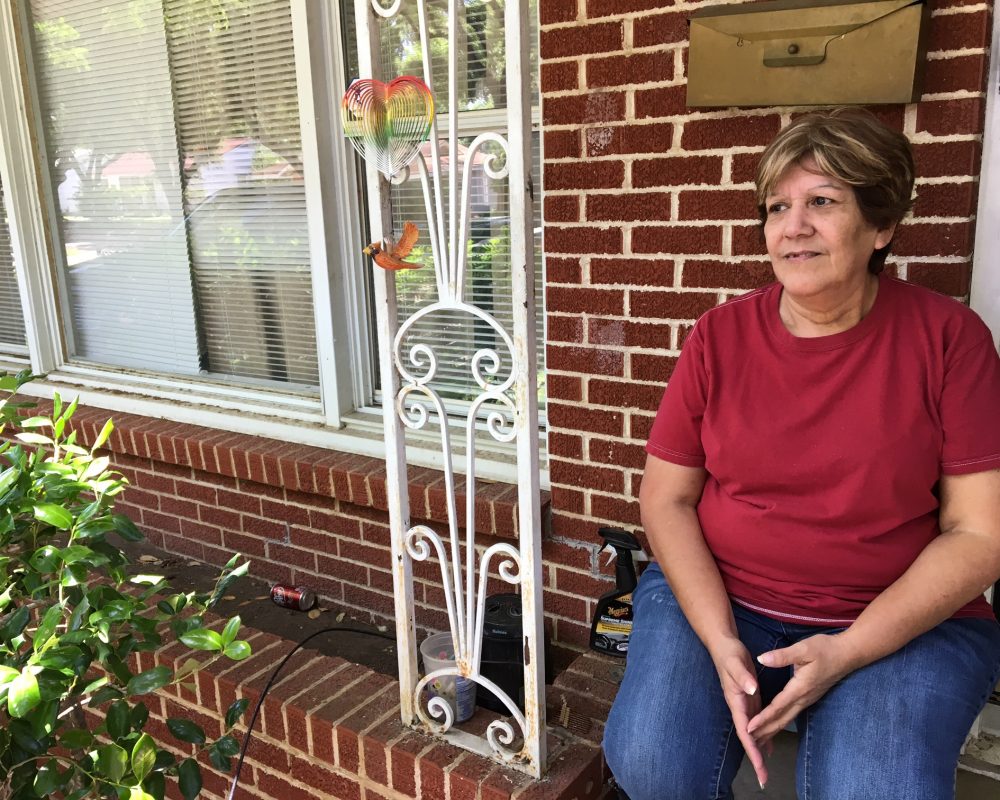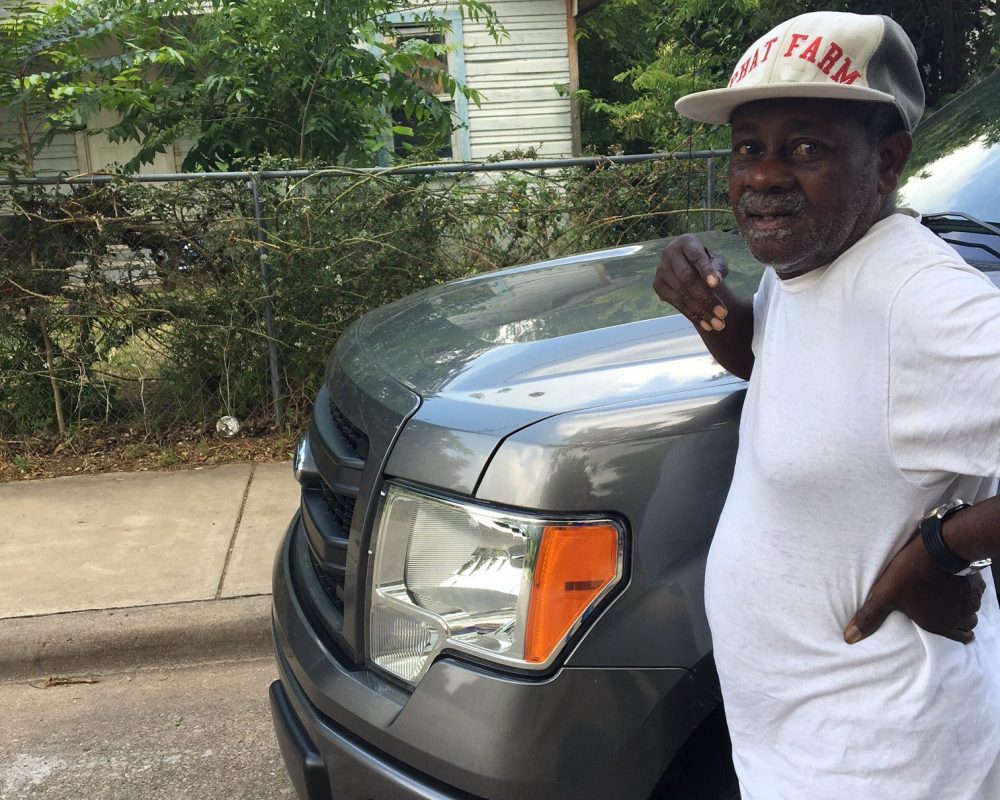 Tennis shoes hang from wires off Singleton Boulevard in Dallas. Photo/Allison V. Smith
Tennis shoes hang from wires off Singleton Boulevard in Dallas. Photo/Allison V. Smith
A Look At The Role Race Plays As West Dallas Gentrifies
West Dallas is a neighborhood in the early stages of gentrification. As high-end restaurants and apartment complexes are built, low-income residents are being edged out. Almost all of the residents are Latino or black.
Forced To Move
Claudia Aranda has a straightforward theory: Gentrification intensifies segregation.
“It’s not just about discrimination and private practices by housing providers,” she says. “It’s also about where people are living today.”
Aranda developed this theory working for the Urban Institute in Washington D.C. And it’s currently playing out in West Dallas.
Most of the 300 families living in rental homes that weren’t up to the city’s strengthened housing code have left West Dallas. Very few have landed in racially diverse suburbs. Almost all of them have ended up in poor, minority-dominated neighborhoods like south Oak Cliff.
Rosemary Guerra and John Anderson were lifetime residents of West Dallas up until a few months ago. When they were told they had to move because their homes weren’t up to city code, they left. Both packed up their families and headed to southern Dallas.
Lack Of Choices
It wasn’t a move they wanted to make. It was the only one they could afford.
Researcher Claudia Aranda says this happens all the time.
“When we talk about what choice you have in housing, it’s really a lack of a choice,” she says. “It’s what you are left with because of what you can afford.”
When low-income families move in one direction — in Dallas, that tends to be south or southeast — poverty becomes concentrated.
“We continue to see these concentrated areas of poverty that are also concentrated racially and ethnically,” Aranda says.

A scene from West Dallas near Singleton Boulevard. Photo/Allison V. Smith
And that kind of segregation comes with consequences. Aranda says one of them is earning potential.
“In those regions, there tends to be greater income inequality, but also it has very real implications for people of particular racial and ethnic groups,” she says. “So, for example, there tends to be lower median income, but particularly for African Americans, a lower per capita income.”
Aranda says it’s up to cities, counties and states to fight for change.
“Look at the entire jurisdiction, look at the entire region to determine where there are these racially and ethnically concentrated areas of poverty, and do something to address them,” she says.
One example would be to give incentives for developers to build affordable housing. Another would be policing zoning laws so there are desirable places to build.
GRAPHIC: DEMOGRAPHIC CHANGES IN WEST DALLAS
The three largest racial groups in West Dallas are Hispanic, black and white, according to Southern Methodist University research.
The white population has grown the most in recent years.
‘No City Can Survive Like That’
HMK Ltd. is the company that owns the homes in West Dallas that no longer meet city code. Co-owner Khraish Khraish explains why in his view, a mix of incomes is essential to a healthy neighborhood.
“If we don’t start creating affordable housing products for our most vulnerable families for the lowest income levels, then what kind of city are we really building?” he says. “This will become a city of just high net worth individuals. No city can survive like that.”
Khraish has sold several of the HMK homes he was renting out to the tenants themselves — and more are still trying to figure out a way to buy. Before he offered to sell, more than half his renters had already moved out. Khraish blames the building boom in West Dallas for segregating the city further.

HMK Ltd. owner Khraish Khraish (left) and Dallas Mayor Mike Rawlings (right). Photos/Courtney Collins
“Whenever Dallas needs to develop in a new direction, it’s typically at the expense of low-income African-American and Hispanic families,” Khraish says. “We’d have to move those families out in order for the high-end developments to come in.”
Mayor Mike Rawlings says, the challenge is to preserve West Dallas’ rich culture and energy.
“The fact that you can now go over to Trinity Groves and eat Moroccan food and go down the street to a lady I know and have tamales at her house, and have one of the great African-American churches right down the road, that’s the kind of city we need to be when it’s all mixed together like that,” Rawlings says.
Still, for the people who’ve moved, like Rosemary Guerra, they’ll never be at home like in West Dallas.
“Everybody knew everybody, and we all got along with each other,” she says. “You know, we never locked our doors.”
Now, she does. And experts say without opportunities for minority families living in poverty, it will be more and more people just like Guerra, bolting their doors in neighborhoods they don’t recognize.
Map: West Dallas By The Numbers
West Dallas is made up of seven census tracts. Click on each tract to learn more about the people who live there.
One Crisis Away: No Place To Go Community Forum
Watch a discussion on housing, development and the evolution of West Dallas.



